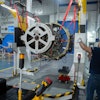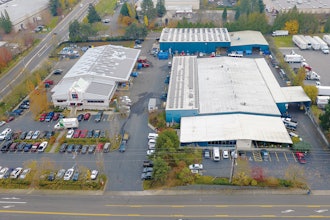In my observation and experience, few organizations achieve truly continuous improvement in spite of extensive training programs, language and cultural changes, and setting expectations of improvement results. Why is that?
It seems especially puzzling considering that each of the continuous improvement methodologies I have studied insists that true success comes not from organized events, but instead it comes from everyone exercising the improvement methodology every day on large and small opportunities alike. This message is especially clear in the Lean methodology, to name one. It is also the objective in Six Sigma, to name another.
In Lean, Kaizen is the ultimate manifestation of the Lean methodology, and Kaizen refers not to “Kaizen events,” but rather to small, incremental improvements every day. In Six Sigma we got in the habit of organizing improvement projects, assigning teams, and reporting our results. This was meant to be a vetting and mentoring process, not the ultimate modus operandi.
The projects give us a chance to put our training to work while practicing cross-functional interpersonal leadership and receiving mentoring from experts. However, once we are certified and have proven our understanding, the expectation should always have been to go forth and to do Six Sigma everywhere that it made sense, without having to organize separate projects.
If unorganized, spontaneous, always-on continuous improvement is, and has always been the goal of each continuous improvement methodology, then why have so many of us failed to achieve such in our organizations? I believe that the reasons are several, which may explain why it seems difficult to achieve. In order of greatest frequency and influence, I make the following observations:
- We didn’t get the vision. We didn’t capture the idea, or see the ultimate picture, of how our continuous improvement methods were to be applied intrinsically within business culture. We clearly received the message that projects are a means of executing our methods, but we didn’t understand that the next and ultimate step is to execute methods all the time; that organizing projects isn’t always necessary.
- We didn’t set the expectation. If we didn’t get the vision, then we couldn’t have set the expectation. If we did get the message, but didn’t establish a system to demand the follow through, then we didn’t set the expectation to chase and achieve the vision. If we don’t make it important or otherwise enable it, it doesn’t happen.
- We don’t empower continuous improvement. Especially in U.S. corporate environments, but in many other environments too, we establish a culture of asking permission to act upon opportunity. It’s a natural behavior to keep large organizations focused and cooperating in a common direction. Unfortunately, it means that we expect that in order to execute an improvement, we must ask permission in the form of a proposal explaining the resources necessary and the expected results in financial terms. Sometimes the work required for us to ask permission is greater than the work required to execute, so we don’t bother.
- We don’t make it worthwhile. When we don’t reward improvement, or worse, when we punish attempts at improvement, we effectively stop improvement. For small, incremental improvements, the reward may be the improvement itself. To enable large and difficult improvements we may need to incentivize personnel to lead or participate. In either case, if we don’t actively encourage our personnel to execute continuous improvement as we expect, they won’t take the time or make the effort to do so.
- We don’t enable improvement efforts. Even small improvement efforts require some time and effort in the forms of observation, analysis, planning, development, experimentation, and executing changes. If we over-task everyone and put continuous improvement in the “free time” or at the bottom of the priority list, it won’t take place, regardless of how much we want it or how much the improvement might mean to everyone’s workload or performance.
- We punish improvement attempts and failures. Not every effort is going to pay off. If we punish attempts that don’t pay off, no one will take the risk of trying. We must accept mistakes, encourage that we learn from them, and remain persistent.
- We don’t set the example. If we expect our personnel to execute continuous improvement every day, but we don’t execute or participate ourselves, we send a mixed signal. It’s a “good for the goose, good for the gander” thing. The entire leadership chain must be just as active in executing continuous improvement as everyone else.
- We don’t recognize it. This is different than making it worthwhile (#6). It’s one thing to incentivize or encourage what we want to take place. In addition, though, we must be aware of and acknowledge what is already taking place. Sometimes our personnel do get the vision, and do make improvements, for their own benefit if for no other reason. If we are oblivious to their successes, however, we discourage further progress and future attempts. If we acknowledge progress and success, then we reinforce the behavior and make it clear that personnel are acting appropriately.
We can debate the relative influence of each of the observations above, but in all practicality it is impossible to measure it. I listed them in order of influence as I see it and also in order of how I recommend we go about removing each roadblock. If we eliminate each barrier in the order listed, I believe that we can quickly and effectively achieve the final cultural ideal of truly continuous improvement.
I’m afraid that discussing how to go about addressing and removing each barrier above could warrant a post, in some cases a whole book, each to its own. The good news is that any of us with some collaboration among peers, some problem solving, and some leadership planning should be able to find an appropriate way to deal with each one according to the unique character of our individual, organizational requirements.
The roadblocks to achieving truly consistent, persistent, continuous improvement are several. Fortunately, if we recognize what they are, and which ones are affecting our organizations, we can address and remove them. Take some time this week to look at your own organization and methodology. Look for the roadblocks listed above and begin eliminating them. Make the way for that final, ultimate step toward continuous improvement success.
Stay wise, friends.
If you like what you just read, find more of Alan’s thoughts at www.bizwizwithin.com






















